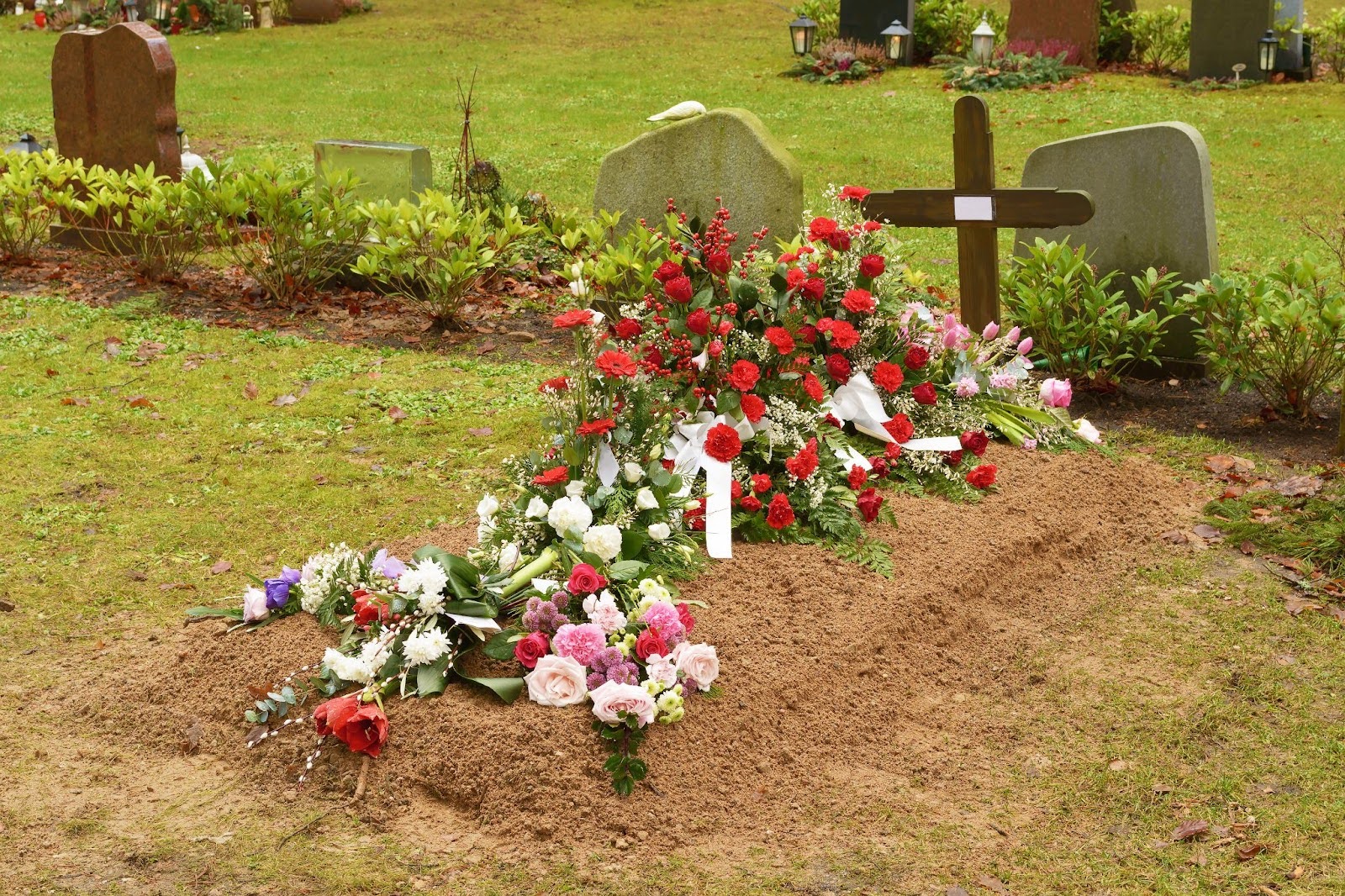What You Need to Know About Direct Burial Services

Direct burial is a straightforward and cost-effective burial option that provides respectful alternative funeral arrangements to more elaborate funeral services. Unlike traditional funerals, direct burial bypasses formal viewings, embalming, and ceremonies, focusing solely on interment. This approach offers families a dignified way to lay their loved ones to rest while avoiding the additional complexities and expenses often associated with traditional funeral arrangements.
For individuals or families seeking a simpler solution, direct burial ensures a meaningful yet practical way to honor the deceased.
What Is Direct Burial?
Direct burial is an option where the deceased is interred shortly after passing without the inclusion of embalming, public viewings, or a formal funeral service. This process is designed to be simple and efficient, focusing solely on the burial itself. Unlike traditional burial methods, which often involve elaborate ceremonies and additional services, direct burial offers families a private and straightforward way to honor their loved one.
In contrast to traditional methods, where embalming and viewings may take place over several days, direct burial prioritizes immediate burial. This approach is particularly appealing to families seeking a minimalistic and cost-effective solution.
Benefits of Choosing Direct Burial
Opting for direct burial comes with several notable advantages, making it an appealing choice for families prioritizing simplicity and affordability.
- Affordability: Direct burial is a cost-effective option as it excludes services like embalming, public viewings, and extensive ceremonies. According to an NFDA report, the median cost of a funeral with a viewing and burial in 2023 was $8,300, compared to $6,280 for a funeral with cremation. Direct burial typically incurs even lower costs, providing financial relief for families.
- Efficiency: The process of direct burial is streamlined, allowing for quicker arrangements and reducing the logistical challenges often associated with traditional funerals. This simplicity can bring peace of mind to families during an emotionally taxing time.
- Simplicity: For families who value privacy or prefer to forego elaborate ceremonies, direct burial offers a straightforward and respectful way to say goodbye. It ensures a dignified farewell while minimizing unnecessary complications.
What Does a Direct Burial Include?
Direct burial typically encompasses several streamlined yet essential components, ensuring a respectful and efficient process for laying the deceased to rest:
- Transportation of the Body: The body is transported from the place of passing, such as a hospital, hospice, or residence, directly to the cemetery. This step eliminates the need for intermediary services like a funeral home viewing, which helps reduce costs and logistical complexity.
- A Simple Casket: A basic, cost-effective casket is chosen to meet burial requirements. Unlike traditional funerals that may include elaborate caskets, direct burial often opts for simple designs that fulfill functional needs while keeping expenses manageable.
- Immediate Interment: Burial occurs promptly, often within 24-72 hours after death, depending on local laws and family preferences. This eliminates the need for embalming or extended storage, aligning with the simplicity of the process.
- Optional Graveside Gathering: While formal funeral services are excluded, families may choose to arrange a brief graveside ceremony. This allows loved ones to gather in an intimate setting to say their final goodbyes, adding a personal touch to the experience.
By streamlining these steps, direct burial offers a practical and cost-efficient alternative to traditional funerals while maintaining the dignity and respect deserved by the deceased and their loved ones.
Factors Affecting Direct Burial Costs
The overall cost of a direct burial can vary depending on several key factors. Understanding these elements can help families make informed decisions and manage expenses:
- Casket Type and Material: The choice of casket significantly influences the overall cost. Simple caskets, typically made of basic wood or fiberboard, are more affordable. However, families may opt for upgraded materials, such as metal or more decorative designs, based on personal preferences or cultural traditions.
- Cemetery Plot Fees: Burial plot costs vary depending on the cemetery’s location, the type of plot (e.g., single, double, or family), and additional services, such as perpetual care. Urban or high-demand cemeteries may charge more than rural locations.
- Transportation Costs: The expense of transporting the deceased from the place of passing to the burial site depends on the distance, logistics, and the specific services provided by the funeral home or transportation service.
- Optional Headstone or Marker Expenses: While not required, many families choose to invest in a headstone or grave marker as a lasting tribute to their loved one. The design, material, and engraving options all contribute to the cost.
For those seeking a more affordable approach, alternatives such as funeral costs help through body donation can provide financial relief while supporting meaningful medical advancements. This option includes cremation at no cost and helps alleviate the burden of burial expenses.
How to Arrange a Direct Burial
Planning a direct burial involves a few straightforward steps:
- Selecting a Funeral Home or Service Provider: Choose a trusted funeral home experienced in arranging direct burials.
- Completing the Necessary Paperwork: Ensure all required legal documents, such as a death certificate, are prepared.
- Choosing a Casket and Cemetery Plot: Select a simple casket and coordinate with a cemetery for an available burial plot.
- Coordinating Transportation and Burial Details: Work with your provider to arrange transportation and finalize burial logistics.
By following these steps, families can organize a direct burial that meets their needs while honoring their loved one respectfully and affordably.
Common Questions About Direct Burial
Direct burial often raises important questions for families exploring this option. Below are answers to some frequently asked questions:
What Are the Rules for Direct Burial?
The specific rules for direct burial vary by location, but generally, a burial must comply with local laws regarding documentation, burial timing, and cemetery regulations. Most jurisdictions require:
- A death certificate: This serves as official documentation for the burial.
- Burial permit: Many cemeteries require a permit issued by local authorities.
- Approved burial plot: The cemetery must approve the plot and burial arrangements.
Families should consult with their funeral provider to ensure all legal requirements are met.
How Long After Death Does a Direct Burial Take Place?
Direct burial typically occurs within 24 to 72 hours after death. This expedited timeline eliminates the need for embalming and extended funeral planning. Families preferring a longer time frame for final arrangements may need to consider refrigeration or alternative services.
Are Embalming and Funeral Services Required?
Direct burial does not require embalming or a formal funeral service. This is one of the key differences between direct burial and traditional funerals, making it a simpler and more cost-effective option. Families who wish to hold a service may choose to organize a private gathering at the graveside or plan a memorial event separately.
Direct Cremation as an Alternative to Direct Burial
For families seeking an affordable and flexible alternative, direct cremation may be a suitable choice. Similar to direct burial, direct cremation excludes embalming, public viewings, and traditional ceremonies.
Benefits of Direct Cremation:
- Affordability: Direct cremation often costs less than both traditional funerals and direct burials.
- Flexibility: Families can schedule a memorial service or scattering ceremony at a time and place that suits them.
- Portability: Cremation allows families to keep or transport the remains, offering additional options for honoring their loved one.
Choosing between direct burial and direct cremation depends on family preferences, cultural practices, and budget considerations. Both options provide dignified ways to honor a loved one while simplifying the logistical and financial challenges of end-of-life arrangements.
Leaving a Legacy to Medical Research
For individuals seeking a meaningful alternative to traditional burial, Our Genesis Whole Body Donation Program at MERI offers a unique opportunity to make a lasting contribution to medical science and education. By choosing whole-body donation, individuals help advance medical research, improve healthcare education, and support innovations that save lives.
Benefits of Whole-Body Donation Through the Genesis Program:
- Advancing Medical Science: Donated bodies are used for research and training that enhance surgical techniques, improve medical devices, and further understanding of diseases.
- No Cost to Families: The Genesis Program includes cremation at no cost, relieving families of financial burdens associated with end-of-life arrangements.
- Simplified Process: Families are supported throughout the process, ensuring all logistics and legalities are handled with compassion and efficiency.
Choosing whole-body donation not only provides a cost-effective alternative to burial but also creates a powerful legacy of helping others.
If you’re curious about how this compassionate choice works, visit our blog post about what is whole body donation to learn more about the process, its benefits, and the impact it can have on medical research and education.
By opting for whole body donation, individuals leave behind a legacy that transcends their own lifetime, improving lives through science and education. Our Genesis Program is committed to making this process as seamless and meaningful as possible for families and donors alike.
Take the First Step: Consider joining our Genesis Program and help shape the future of medical advancements. Your choice today could lead to breakthroughs that improve tomorrow.
